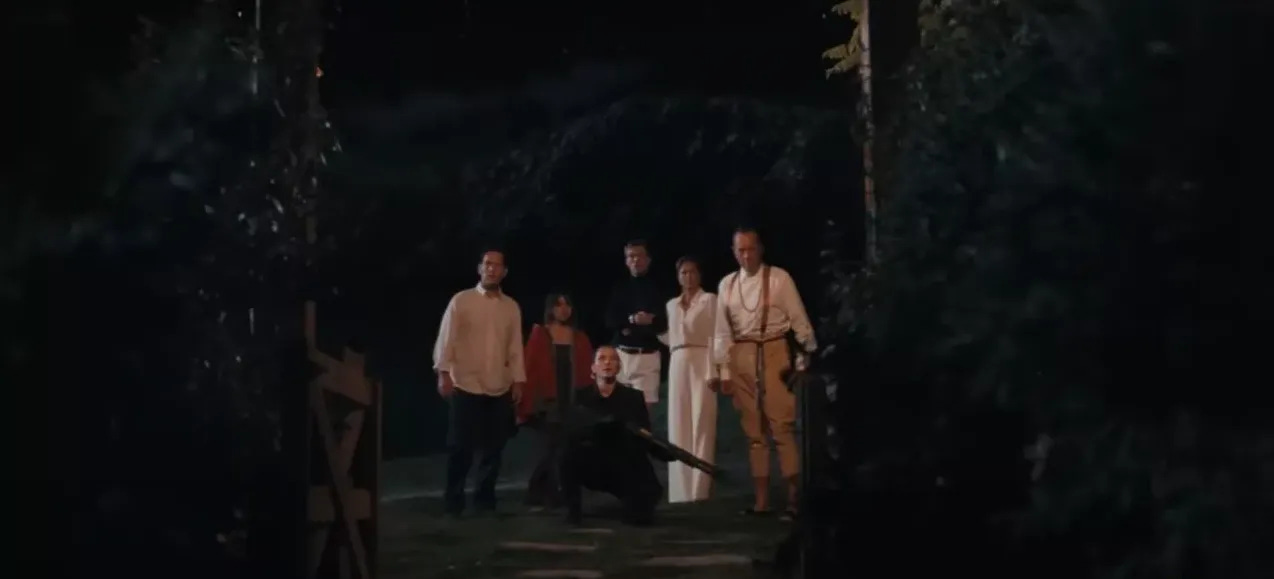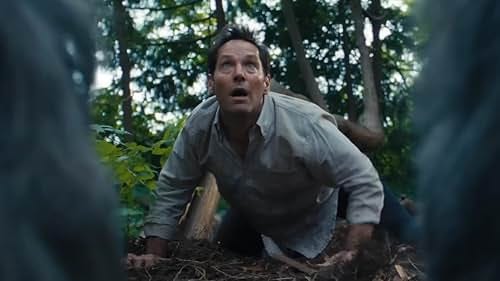Death of a Unicorn isn’t really a family film, for at least one clear reason—but it is a film for a millennial audience who might look fondly on a time when robust, quirky family movies featuring A-listers were common. The formula is temptingly familiar. A father and daughter, who struggle to understand each other after the loss of a mother, wife, are thrown into something supernatural and transformative. Paul Rudd is career motivated, selfish, from Jenna Ortega’s perspective. She’s a radical, principled college student, studying art history. He’s the lawyer for big-pharma magnates, “price gougers,” as she calls them. He’s doing all he can to become the family's legal proxy as they prepare for a change in leadership, as if his career trajectory is all that counts regarding his daughter’s life. He’s dragged her along as living proof of “family values.” She sneaks hits off a Juul. It’s all almost as familiar as it was in Beetlejuice Beetlejuice, another return to the better days of mid-market Hollywood.
We smash headlong into the supernatural when a unicorn steps in front of the car. This is also when the tone really starts to crystallize. The creature (and the unicorns are indeed more monster than my little pony) design is interesting but the rendering of these computer generated beings is frankly noticeable. But it is actually the movie’s reliance on these goofy giants that began to grow on me. Once I recognized late-2000’s Disney Channel movies as its closest predecessors any overwrought quirkiness became a plus. While the unicorn lies dying in the road Ortega grasps its horn and the universe explodes in her eyes, drawing her through a kaleidoscopic vision reminiscent of DMT trip recreations on YouTube; the depiction of magic—streams of colorful, vaguely electrical light—is in the vein of Wizards of Waverly Place and Spy Kids. And it isn’t pastiche, really, or particularly ironic. The movie simply moves into a realm that isn’t serious, while still playing it straight—not dissimilar to Beetlejuice Beetlejuice. This shouldn’t absolve any crimes, but I do think the movie knows enough to chuckle at itself.
Paul Rudd and Jenna Ortega are wonderfully predictable doing their typical roles, square dad and moody kid, respectively. This could be a knock on them, if you prefer the decidedly unhinged, supposedly original, breathy and agitated performances that win awards, but it could also be a major relief if you long for simpler times when A-listers acted for your entertainment. Paul Rudd has been doing it for a long time, and Jenna Ortega is following somewhat in his path, repeating variations of this role in Tim Burton projects. There is in general a talent-drain leaking from one increasingly homogeneous universe (Marvel) to another, the ‘major’ independents like A24. Death of a Unicorn is also part of a trend, or what seems like it, of a company like A24 shifting from edgy, boutique darlings toward possible crowd-pleasers—think Y2K or The Legend of Ochi. Still off kilter, but clearly closer to Ant Man than to Moonlight or Past Lives. Colorful, unapologetically goofy, maybe a little saccharine, but supposedly singular. I think it is crucial, however, that movies such as these are not attempting to convince us of something more, that they themselves are more than entertainment. There isn’t anything wrong with Stuart Little or Flubber. Nobody thinks those movies shouldn’t exist because Godfather: Part Two does. The best compliment I might pay Death of a Unicorn is that it doesn’t seem to do this. It has a tone, a lane, and stays there. It seems content to be goofy, ridiculous, a little sweet, a little scary.
Richard E. Grant is lively and vile, always entertaining, particularly worthwhile here as the patriarchal pharma-philanthropist. Téa Leoni is the saucy rich wife who turns out even more cutthroat and delivers the coyest lines (art history? “ugh”). The side characters (played by Sunita Mani and Anthony Carrigan) are perfectly cast, a thoughtful blend of tropes, unique enough. They add presence and bite whenever they enter. Will Poulter is hilarious, exceptional as the trust fund golden boy and K-hole maniac on the verge of an Oedipal coup.
The thin plot and fittingly flimsy emotionality is hardly developed, but par for the course. Naturally the dubiously philanthropic pharma-family, whose patriarch is dying of cancer, has no intentions of doing the noble thing when a dead unicorn lands on their doorstep, and seems to heal Jenna Ortega’s acne and Paul Rudd’s eyesight. Their eyes are rolling over with dollar signs like slot machines despite Ortega’s warnings, fueled by research on the famous unicorn tapestries at the MET Cloisters, her mom’s “favorite museum.” These feebly referenced legends become a rather weak outline of the coming action. The angered unicorns become “vengeful” beasts on a rampage until they are “entranced by a pure maiden.” Eventually the plot transitions fully to a quasi-horror survival story as this eclectic group makes various unsuccessful attempts to trap the creatures, kill them, appease or escape them.
The turning point is vague and maybe not effective, or existent. Paul Rudd is made to realize, slowly, painfully, at risk of death, that he has sold his soul, and his daughter, for people who don’t care about him. The night is dark, lit only by the ominous Aurora Borealis, and snarling unicorns burst out of the shadows just like proper horror villains. This is the main element that disqualifies Death of a Unicorn from being a decent family movie—grisly gory goodness. The vengeful beasts are in fact vicious, ruthless, and vengeful, and promptly rid the crew of their henchmen, cornering the rest. The action mostly works but the plot dissolves into a series of escape room premises—Ortega has to get service to warn the hunting party before they become the hunted, someone has to open the gates manually. There are too many stops and starts. The plot suddenly hangs on random interjections of drama. Scenes carry on which only serve one or another of these ends, and we lose sight of anything else. The gore also becomes tedious. In this especially it is a “one trick pony” —one horn, to be specific.
The inevitable culminating resolution between father and daughter is pat, thin, and…inevitable, but well played by Rudd and Ortega. Of course they must come together, of course they must reconcile with death, of course Rudd must see the error of his ways. The finale is somewhat playful with these expectations, but they can still be expected.
The most important similarity to the typical late-2000’s fare is that the filmmaking is solid, basically unpretentious, and the acting is full-throated and dedicated. The visual design, the house for instance, is a tactful modern interpolation of the cloister tapestries themselves. The dialogue is tight and quippy, and serves each character ideally. The effects are goofy and colorful, and we’re meant to enjoy them. It’s all played straight, which is a rare thing these days.










Love your writing. Thanks